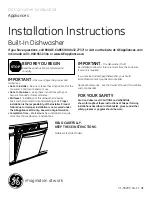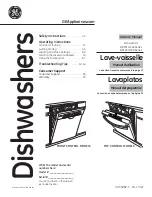
4.4 Maintenance and cleaning
The life of your product will be extended and
regular problems will be reduced if it is
cleaned regularly.
C
INFORMATION
• Foreign metals cause rust spots in the
drum. Clean the stains on the drum
surface with stainless steel cleaners.
4.4.1 Cleaning the detergent drawer
Clean the detergent
dispenser regularly
(every 4-5 wash cycles)
as shown below,
to prevent the build-up of
powder detergent in the
long term.
a
WARNING!
• Never use steel wool. These damage the
painted, chrome and plastic
surfaces.
4.4.3 Cleaning the cabinet and
control panel
To remove, lift the back of the siphon as
shown.
Wipe the machine cabinet with soap and
water or, if necessary, a non-abrasive mild
cleaning gel, and dry with a soft cloth.
If more than a normal amount of water and
softener mixture collects in the softener
compartment, the siphon needs to be cleaned.
Use only a soft and damp cloth to clean the
control panel.
1
Press the marked point of the siphon in the
softener compartment and pull towards you
until the drawer is removed from the machine.
4.4.4 Clean the water supply filters
2. Wash the detergent drawer and the siphon
in a sink with enough lukewarm water. To
prevent residues from coming into contact
with your skin, clean it with a suitable
brush and wear gloves.
There is a filter on the end of each water
supply valve on the back of the machine and
also on the end of each water supply hose
where they connect to the faucet. These
filters prevent foreign substances and dirt in
the water from entering the washing
machine. The filters must
d because they get dirty.
3
Slide the tray back into place after cleaning
and make sure it is seated correctly.
4.4.2 Cleaning the
loading door and drum
For products with a drum cleaning
program, see 'Operate in the product
- programs'.
C
INFORMATION
• Repeat the drum cleaning process for
months.
• Use a detergent/anti-limescale agent
suitable for the washing machines.
1. Close the taps.
2. Remove the nuts from the water supply hoses
to access the filters on the water supply
valves. Clean them with a suitable brush. If
the filters are too dirty, remove them with
pliers and clean them this way.
After each wash, make sure
that no foreign matter
remains in the drum.
3. Remove the filters on the flat ends of the
water supply hoses with the gaskets and
clean them carefully under running water.
If the holes in the cuff as shown in the picture
are clogged, you can open it with a toothpick.
4. Carefully replace the seals and filters and
tighten their nuts by hand.
23 / NL
Washing Machine / User Manual






































